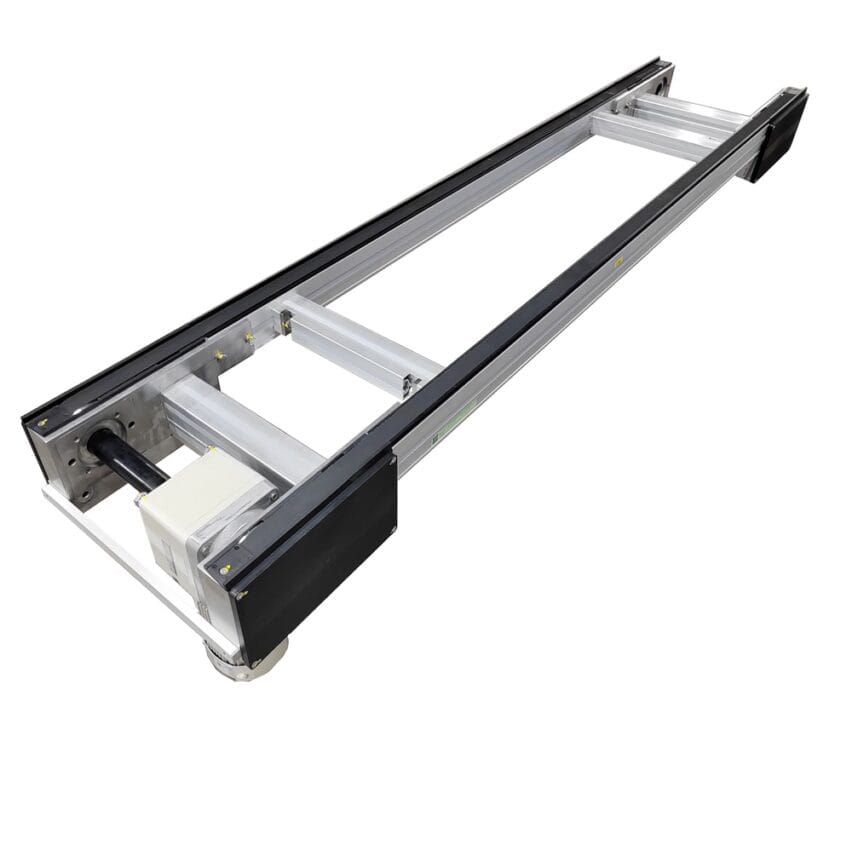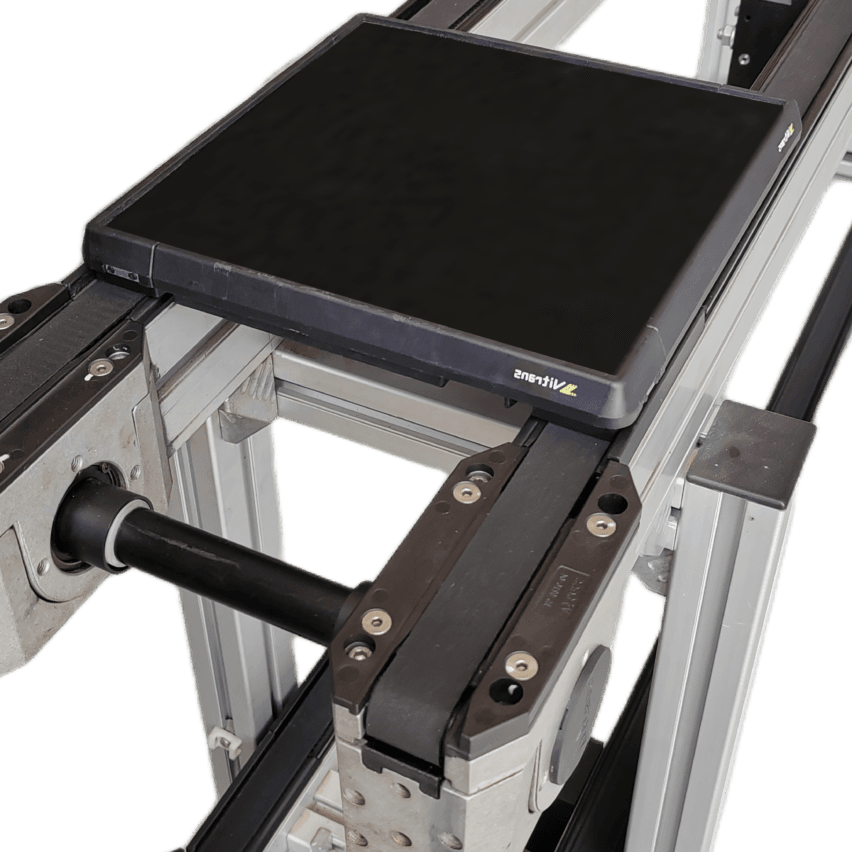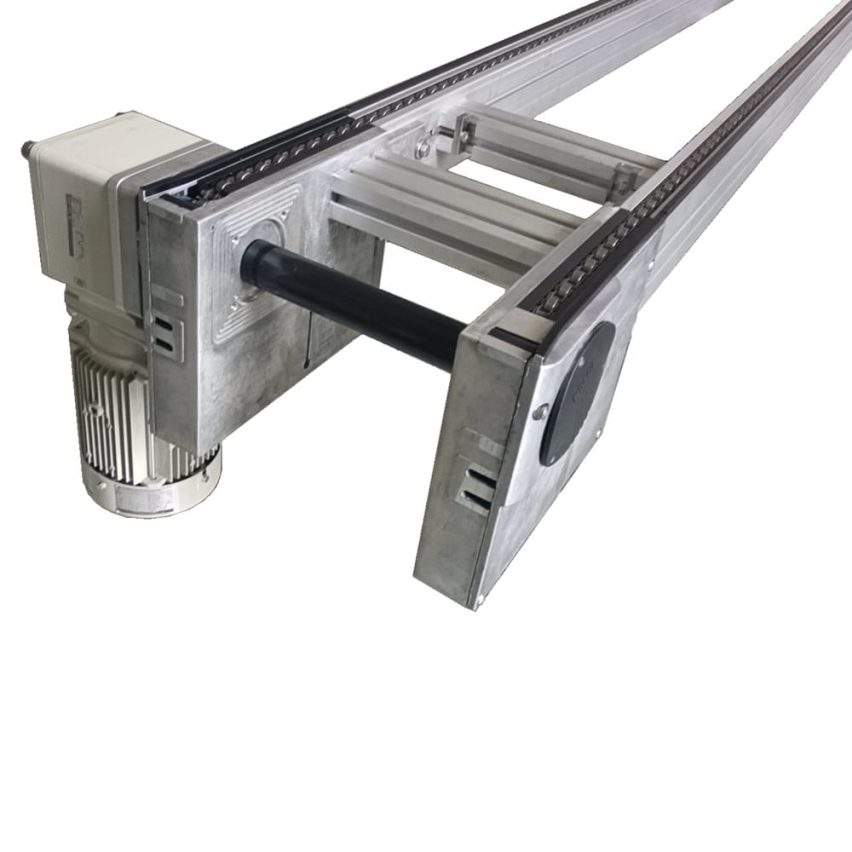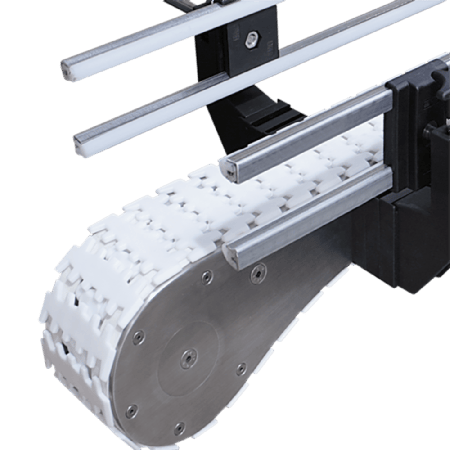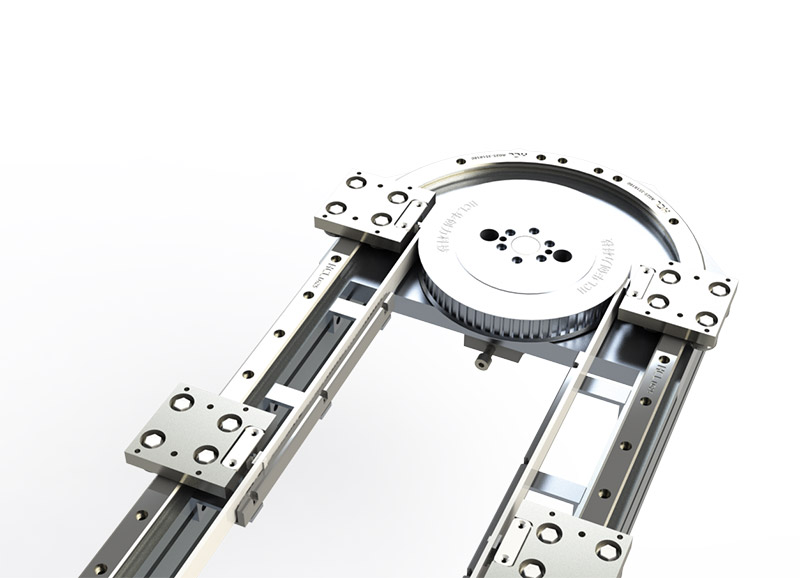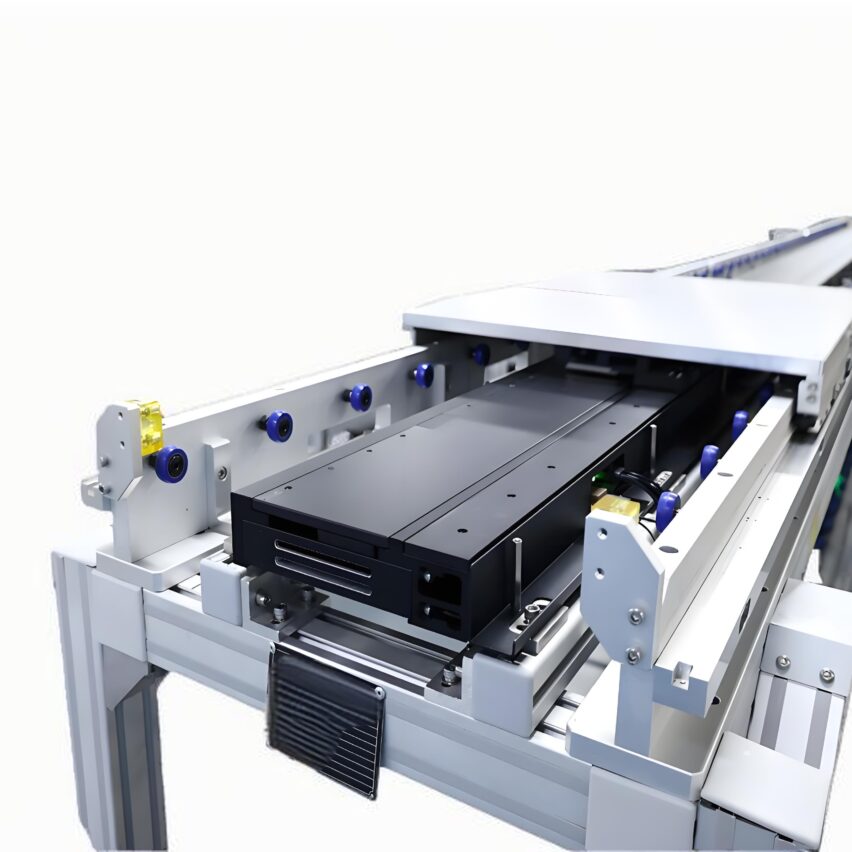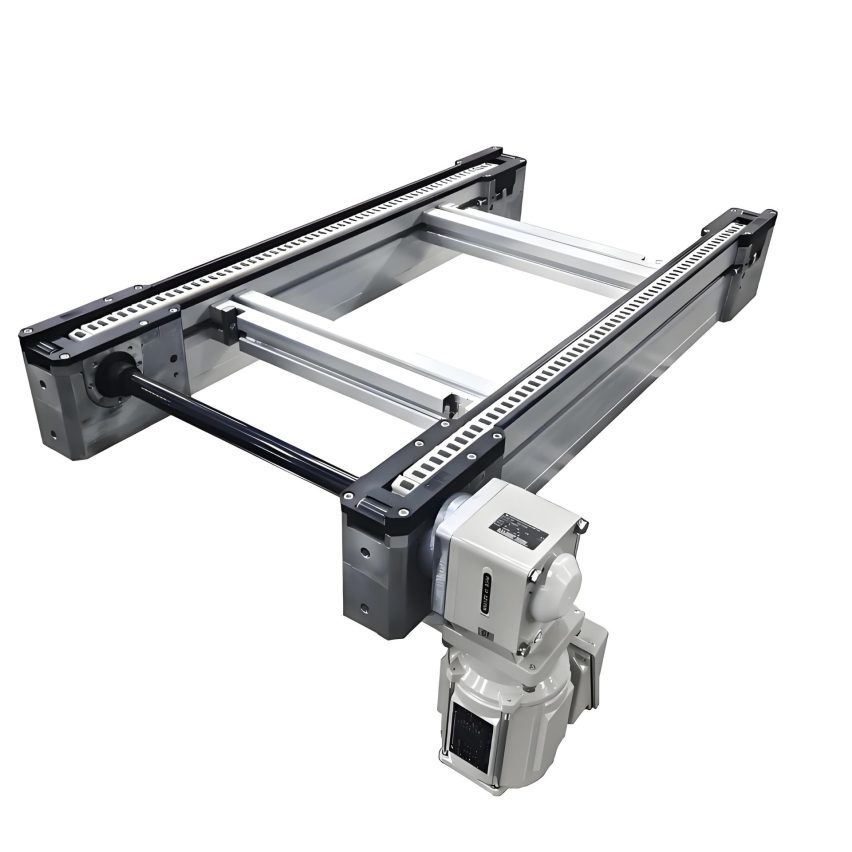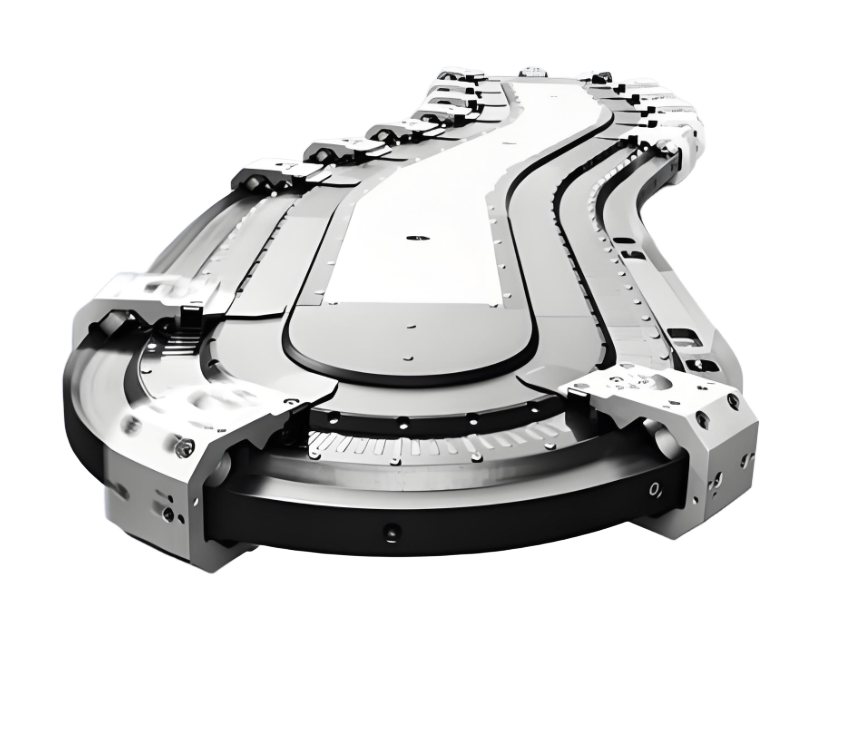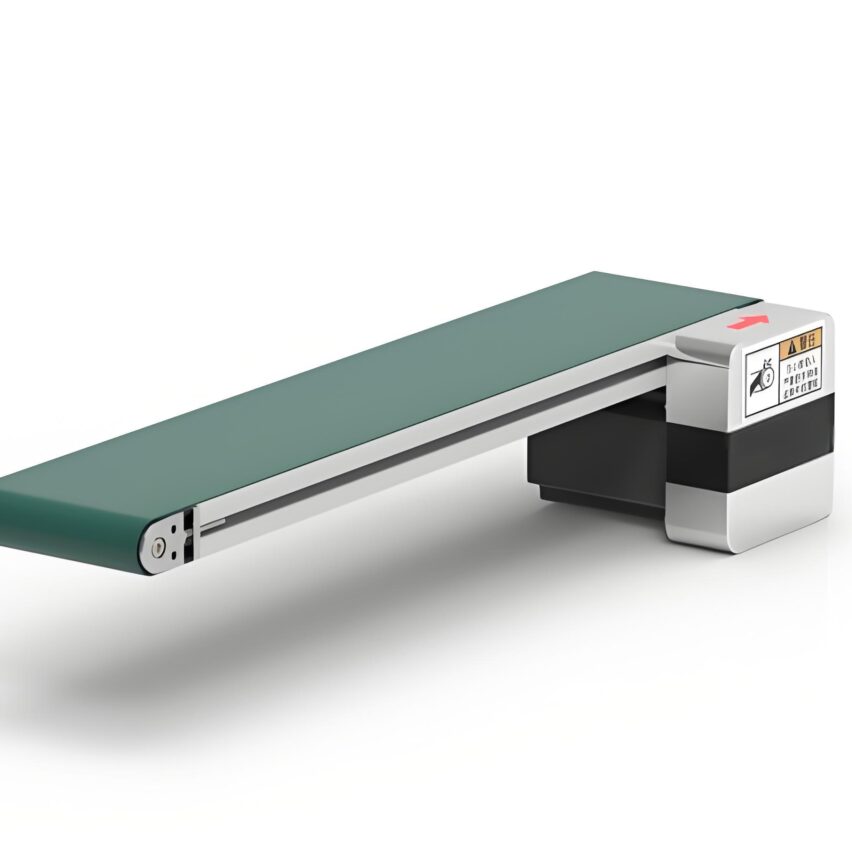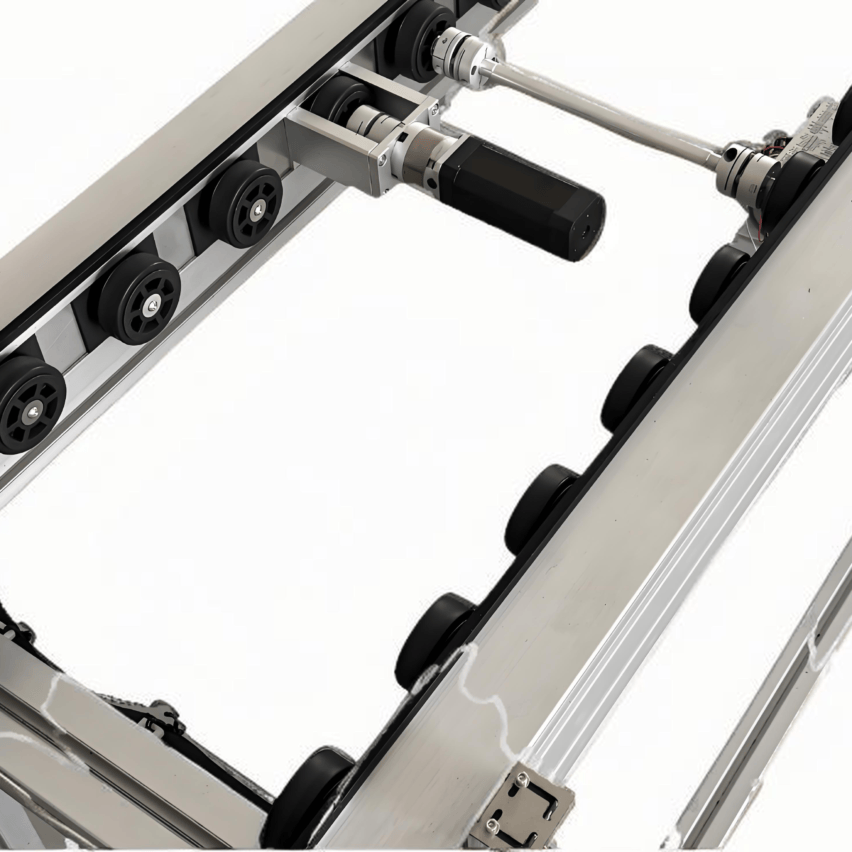I. Core principle: three-dimensional reconstruction of differential velocity effects
The underlying logic of the three-layer triplex chain lies in theDesign of diameter difference between roller and roller (D/d=2), whose velocity superposition equation is:
Workpiece speed V = V₁ × (1 + D/d)
When the roller diameter D is twice the roller diameter d, the theoretical speed can be up to three times the chain speed. However, the traditional single-layer structure faces three major bottlenecks:
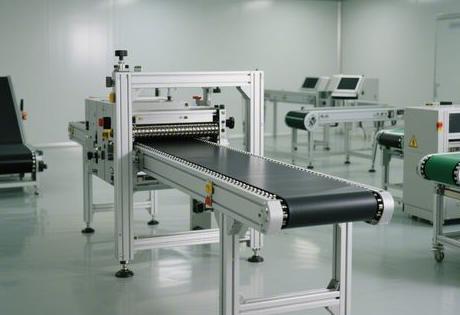
- Low space utilisation: Single-layer line body can only carry a single type of material, redundant line layout;
- Thermal deformation superposition: Accumulation of temperature rise in the multilayer structure leads to amplification of the expansion error to ±2mm;
- Dynamic load imbalance: Co-ordinated deviation of speed between heavy loaded layer (e.g. car chassis) and light loaded layer (electronic components) >15%.
A revolutionary breakthrough in three-layer construction::
- Differential Stratified Control: Steel rollers (friction coefficient 0.12) for the lower heavy-duty layer, engineering plastic rollers (friction coefficient 0.08) for the middle light-duty layer and ceramic composite rollers (friction coefficient 0.05) for the upper clean layer;
- Vertical Thermal Compensation System: Temperature sensors are embedded in each layer of the guideway, and the interlayer gap is dynamically adjusted by the PTFE expansion coefficient (compensation accuracy ±0.03mm);
- magnetohydrodynamic synergy: Three layers of chain share a magnetic fluid tension cell, balancing tension fluctuations caused by load differences in real time.
Tesla Berlin factory real-world data::
- The three-tier structure compresses Model Y chassis assembly space by 601 TP3T and reduces the production line footprint by 451 TP3T;
- Battery packs are transported synchronously with the doors, with a beat error of <0.5 seconds.
II. Structural design: engineering evolution from materials to modularity
1. The golden triangle of layered bearers
- underlayerCarbon steel frame + titanium alloy honeycomb chain plate, single metre load bearing 2.5 tonnes, bending strength increased 250% compared with traditional chain;
- Middle Multi-Functional LevelRemovable modular work plates, support for pneumatic fixture quick-change, switching production line layout time <4 hours;
- upper cleansing layer: 304 stainless steel chain + static dissipative coating, surface resistance stable at 10⁶-10⁹Ω, meets ISO 4 cleanliness standards.
2. Triple redundancy of drive systems
- Distributed servo motors: Each layer is independently equipped with flat-wire motors (power density 8kW/kg), and the response of motor torque compensation for neighbouring layers in the event of a single point of failure is <100ms;
- Dual chain engagement design: The active sprocket adopts a double-row tooth structure to prevent single chain breakage leading to inter-layer collision;
- Quantum gyroscope speed stabilisation: Real-time detection of chain angular velocity ω = v/r (v is linear velocity, r is sprocket radius), with fluctuation rate controlled at ±0.1%.
3. Modular Expansion Interface
plaintextmake a copy ofMechanical interface: ▪ T-slot guide rail supports OMRON photoelectric switch quick-insertion ▪ Pneumatic interface pre-buried Φ6mm polyurethane piping Electrical protocol: ▪ EtherCAT backbone (transmission delay <1ms) ▪ Profinet redundant backup Load compatibility: ▪ 500kg load layer according to 800kg motor selection ▪ Adjustable floor height range 300-1500mm
III. Industry empowerment: paradigm reconstruction from automotive manufacturing to biomedicine
1. Mixed-line production of automobiles (Azure Hefei base)
- material separation: Lower level conveys 1.2 tonnes of battery packs, middle level flows doors (positioning accuracy ±0.05mm), upper level transfers wire harnesses;
- digital twin preview: Predicted assembly conflicts, failure warning 72 hours in advance, OEE improved to 95%;
- Carbon Fibre Recovery System: Real-time adsorption of cutting waste with a recovery rate of 92%.
2. 3C electronic miniaturised assembly (Apple's Shenzhen production line)
- Anti-micro-vibration design: Air spring dampers + magnetic levitation damping, amplitude controlled to 0.1μm;
- AI visual closure: Deploying 16K Ultra HD cameras in each layer, automatic alarm for patch offset > 0.05mm;
- Energy consumption optimisation: Combined power savings of 341 TP3T for a three-tier kinetic energy recovery system.
3. Aseptic production of vaccines (Kexing Beijing base)
- Interlayer pressure gradient: Positive pressure difference in the upper 100-level clean area>15Pa, microbiological contamination rate to zero;
- RFID full traceability: Workpiece board chip records temperature, humidity, sterilisation parameters, data blockchain depository;
- 135°C Resistant Chain: Autoclave cycle time reduced to 1/3 of conventional lines.
IV. Intelligent systems: quantum synergy of data flow and physical motion
Three-tier edge computing architecture::
- perceptual layer::
▪ Laser arrays (±0.03mm positioning)
▪ Infrared thermal imaging camera (±0.5°C temperature difference monitoring) - decision-making level::
▪ Digital twin previews load changes → Dynamic adjustment of inverter outputs
▪ Monte Carlo algorithm to optimise layer velocity perturbations (error ≤ 0.01mm) - implementation layer::
▪ Maglev blocker (response ≤ 10ms)
▪ Piezo ceramic trimmers (deformation sensitivity 0.1 μm)
Blockchain "carbon passport" system::

- Aluminium profile recycling rate of 951 TP3T and full life cycle carbon footprint reduction of 281 TP3T;
- Production value per square metre is 3.2 times higher than that of a single-layer production line.
V. Future trends: from superconducting drives to quantum topology
1. Superconducting magnetic levitation drives (mass production in 2026)
- Liquid nitrogen-cooled yttrium barium copper-oxygen coils replace mechanical rollers, energy consumption drops another 40%, and the theoretical growth rate ratio breaks through.6 times.;
- Zero-contact drive eliminates metal dust and increases chip manufacturing yield to 99.99%.
2. Hybrid quantum-classical computing
- 100,000 nodes scheduling response delay <5ms (traditional PLC needs 200ms), thermal deformation compensation real-time improvement of 40 times;
- The topology optimisation algorithm automatically generates an interlayer support structure with a weight reduction of 30% and a stiffness increase of 22%.
3. Biological self-healing materials
- MIT develops bio-enzymatic lubricant: microcracks trigger enzymatic reaction to automatically repair wear (life extended to 100,000 hours);
- Arachnid protein coating: coefficient of friction reduced to 0.02, close to the limit of ultra-lubrication.
Self-questioning: concerns at the heart of the three-layer triple-speed chain
Q1: Why did you choose three floors instead of more?
A.Subject to mechanical stability and thermodynamic limit constraints::
- The resonance frequency shift >15% for layers >3 is prone to structural harmonics;
- The thermal entropy gain rate increases exponentially with the number of layers, and the four-layer structure increases the heat dissipation energy consumption by 1201 TP3T.
Q2: Are maintenance costs increasing geometrically?
A.Full Life Cycle Cost Inversion 35%::
- Self-healing lubrication system extends maintenance intervals to 5 years;
- Digital twins anticipate failures and reduce unexpected downtime by 80%.
Q3: Is it compatible with existing production line modification?
A.Modular design cracks the retrofitting problem::
- The column quick release structure supports retrofitting to conventional single-deck production lines within 72 hours;
- The floor-by-floor leasing model reduces the initial investment by 50%.
When the manufacturing industry is caught in the triangle of "efficiency-space-energy consumption", the three-layer triple-speed chain will be used as a tool for the manufacturing industry.Accuracy of ±0.03mm under 2.5 tonnes of heavy loads, andQuantum computing response <5msThe hard-core data signalled.The next stop in industrial evolution is to allow physical space and data dimensions to reconfigure the nature of production relations in a cascading structure.
Exclusive data: According to the Global Smart Factory Report 2027, factories with three-layer multiplier chains have an output density per unit area of 4.8 times that of traditional production lines, and the efficiency of production line restructuring has been increased by 90%, with the market size in 2030 expected to exceed $20 billion.

